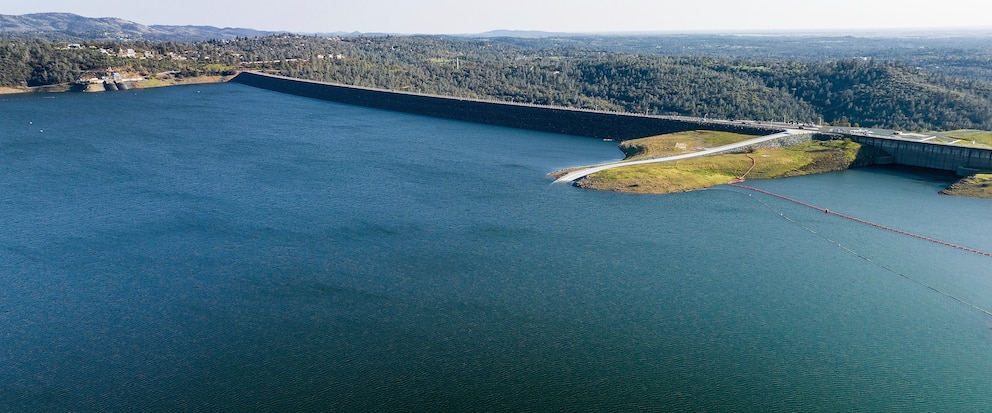California experiences record-breaking water year: Reservoirs reach 128% of average capacity due to abundant rain and snow
California, a state known for its frequent droughts and water scarcity issues, is currently celebrating a record-breaking water year. Thanks to an abundance of rain and snowfall, the state’s reservoirs have reached an impressive 128% of their average capacity. This surplus of water brings relief to both residents and the agricultural sector, which heavily relies on irrigation for its crops.
The water year in California typically runs from October 1st to September 30th, and this year has been exceptional in terms of precipitation. The state experienced a series of atmospheric rivers, which are long, narrow bands of moisture that originate from the Pacific Ocean and bring heavy rainfall to the region. These atmospheric rivers were responsible for the significant increase in precipitation levels throughout the state.
The Sierra Nevada mountain range, a crucial source of water for California, received an exceptional amount of snowfall this year. Snowpack measurements taken in April showed that the Sierra Nevada snowpack was at 171% of average, which is a remarkable figure. As the snow melts during the spring and summer months, it will continue to contribute to the already abundant water supply.
The increased water levels in California’s reservoirs have several positive implications. Firstly, it ensures a stable water supply for residential use. Californians can now enjoy longer showers, water their lawns without guilt, and have peace of mind knowing that their taps won’t run dry anytime soon.
Secondly, the surplus water is a boon for the agricultural industry. California is one of the largest agricultural producers in the United States, and irrigation is vital for crop growth. With ample water available, farmers can irrigate their fields more effectively, leading to increased crop yields and overall economic prosperity.
Furthermore, the excess water provides environmental benefits as well. Wetlands and wildlife habitats that were previously suffering from water scarcity can now thrive. The increased water levels in rivers and streams support a healthier ecosystem, benefiting various species of fish, birds, and other wildlife.
However, it is important to note that the abundance of water does not mean the end of California’s water management challenges. The state still needs to focus on long-term water conservation and sustainable practices. Droughts are a recurring phenomenon in California, and it is crucial to prepare for future dry spells.
One way to achieve this is by investing in infrastructure projects that capture and store excess water during wet years. Building more reservoirs and improving water storage systems can help mitigate the impact of future droughts. Additionally, promoting water conservation measures among residents and industries is essential to ensure responsible water usage.
In conclusion, California’s record-breaking water year, with reservoirs reaching 128% of average capacity, is a cause for celebration. Abundant rain and snowfall have provided relief to residents, farmers, and the environment. However, it is crucial to remain vigilant and continue implementing sustainable water management practices to prepare for future droughts. With careful planning and responsible water usage, California can ensure a more resilient and water-secure future.



